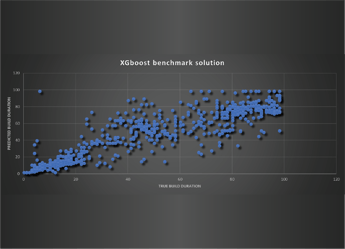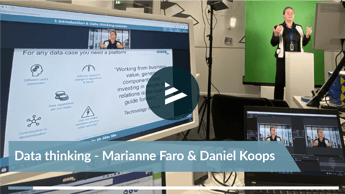CIO transformation
Digital transformation is on the agenda of nearly every CIO. But what does the phrase mean? Actually, ‘digital transformation’ is not a good definition of the concept. ‘Digital’ describes the means rather than the goal, and ‘transformation’ suggests a temporary transition, after which you’ve been ‘transformed’ and are thus ‘digital’. But digital transformation is primarily a new way of thinking.
Digital transformation is about enterprises making the switch to focusing on people and customers in their work, rather than just on products or services. It’s about combining technologies, software and data into new smarter services and products. Of course, we were already doing that, but now new software technologies enable us to do so more analytically and in real time, allowing us to provide a better experience.
We recognize the necessity for transformation. Our customers expect more for less and are looking for intelligence, ease of use and high quality. Our business is sailing closer to the wind and everything has to be faster. Today’s smart service or product is tomorrow’s legacy.
Platform thinking
Digital transformation is often seen from the outside in, so mainly from the customer’s side. However, if you look inward, to your own IT organization, can you also facilitate digital transformation there? Can you work in an ultimately customer-oriented way and provide your IT services in a smarter way? Rather than managing reactively, use software to run the IT operation automatically, like a well-oiled and predictable factory. And use analytics to make the IT proactive, giving smarter real-time alerts and learning from the environment itself – with all the associated advantages for the business.
The type of platform needed to facilitate this digital transformation within the IT organization is a software and analytics platform that manages the configurations of all the IT components. A platform that provides people with the resources to adjust, simulate and improve the IT production line – without them having to dig too deep into the workings. A robot platform that helps the operator manage and improve the configuration of the IT machine.
This involves many things: robotization, plugging in to the many IT semi-finished products and continually collating metrics about what happens within the platform and outside it. And establishing an uncluttered and situational view of the landscape that continually learns and predicts.
Software and analytics
A platform like this is supported by software and analytics. Software ensures the controlled management of the platform. You could see it as a production line that is operated by a robot. And that robot is in turn operated by an operator, i.e. the software guy, who manages the robot (the platform) through recipes.
Analytics ensures that the robot becomes gradually smarter. The analytics correlator is the brain of the platform, whereby the robot learns through machine learning. The operators train the platform’s algorithms.
"A robot platforms helps the operator to manage and improve the configuration of the IT machine."
CIO transformation
The digital transformation of IT services is significant for the role of the CIO. He or she becomes a software manager, automating their services on the basis of DevOps thinking, and keeping them under control through analytics. Things then run better and all at once: response time, flexibility, security and – last but not least – cost levels.






